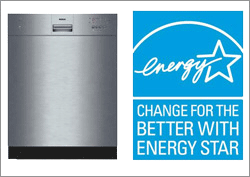 The VA home loan program offers eligible borrowers a multitude of advantages. No money down, no private mortgage insurance required, accessible refinancing options, no established minimum credit scores, and service-related disability options, anchor the loans appeal. These benefits are the driving force behind the loans expanded popularity in recent years.
The VA home loan program offers eligible borrowers a multitude of advantages. No money down, no private mortgage insurance required, accessible refinancing options, no established minimum credit scores, and service-related disability options, anchor the loans appeal. These benefits are the driving force behind the loans expanded popularity in recent years.
Many borrowers however do not realize the full scope of what the VA loan can be used for. Did you know that you can get government funds for energy efficient home improvement? Special government home improvement mortgages, tax credits and rebates are available.
A VA Energy Efficient Mortgage is used to support a multitude of improvements rooted in energy efficiency. Examples of improvements that can be conducted using this type of VA mortgage include solar powered cooling and heating systems, caulking and insulation, remodeled doors and storm windows as well as specific thermostats.
Are you interested in the United States government funding your home improvement? The 48 tips listed below will save you money, remember, Uncle Sam picks up the tab!
ENERGY Star appliances are certified by the government to reduce energy consumption when compared to non-ENERGY Star products. Replacing older appliances will reduce your electric bill by hundreds of dollars per year.
- Replace your refrigerator.
- Replace your Dishwasher (Older Dishwashers use ten times the water and more electricity than newer ones).
- Unplug your water cooler or upgrade to a refrigerator with a water filtration system.
- Trade in your old freezer. Stand-alone freezers built before 1980’s will use more than $80 per year in extra energy.
- Upgrade your air purifier. Inefficient air purifiers use 40% more energy than efficient ones.
- Replace your old clothes washer. Newer washing machines use less water, less detergent and less power.
- Recycle your old dehumidifier. Older dehumidifiers can use 15% more energy than efficient ones.
- Kill Your CRT Television. Energy inefficient TV’s use 40% more power than those approved.
Computers and other media TV, stereos, etc. can use an enormous amount of power. Newer media equipment is designed to use less power or to use the power it does consume more efficiently.
- Replace your computer. Older PC’s can use twice as much power as newer models.
- When possible switch to rechargeable batteries. Rechargeable batteries last longer and cost less per hour than disposable (one use) batteries.
- Upgrade your DVD or Blu-Ray disc player to an ENERGY Star-approved model.
- Upgrade your cordless phone to an eco-friendly one.
- Get rid of your old converter box.
- Use power management on your computers monitors setting.
- When not using your computer, switch your monitor off.
- Replace your old computer monitor. This will save up to $365 in electricity costs.
- Ask your cable or satellite provider for an ENERGY Star set top box. ENERGY Star set top boxes/DVR’s will use 30% less power.
Reduce your convection footprint. The biggest energy expense in most homes is air conditioning and heating. Also, most homes will waste the majority of the heated and cooled air.
Here’s how to cut that down:
- Replace your Old Whole house AC unit. A newer AC unit will save you $300 per year on average.
- Replace your room AC unit. Newer AC units designed to cool one room will use 10% less power than older models.
- Have an older boiler? Replace it. Newer boilers use 6% less energy than older ones.
- Seal Windows. Air leaks will waste some of the heated and cooled air. A bad air leak can waste almost $1,000 per year.
- Replace your roof. An inefficient roof is one of the largest energy leaks in the home.
- Replace old windows. Old windows can cause air temperature loss in the winter and increase home heat in the summer.
- Replace Your Skylights. Windows can leak air and heat loss. Upgrading to ENERGY Star skylights.
- Seal Outlets. Outlets can leak air. Air leaks cause an un-necessary increase in the overall heating and air-conditioning bills.
- Place duct mastic around Air duct connections. Most heating and AC systems will lose more than 20% of air between the HVAC unit and the vent.
- Add insulation to your attic. Most attics offer inadequate insulation. Hot air rises, losing heat and increasing the cost to heat or cool your home.
- Add insulation to your walls. The average home in the US lacks the right amount of insulation. By adding insulation to your walls, you can substantially reduce your electric bill.
- Add insulation to your basement. 13. Install a programmable thermostat. A thermostat with a timer can cut your electric bill by half.
- Use spray sealant to seal up gaps around electrical fixtures. 15. Spray foam seal around plumbing access points (like under your sink).
- Replace your furnace. Older furnaces can cost you more than $150 a year to operate than a newer one.
- Replace your older heat pump. If you upgrade your heat pump, you can receive a 30% tax credit.
- Upgrade to a geothermal heat pump. Geothermal heat pumps are 45% more efficient and can even heat your water saving you hundreds per year.
Your home office is another major consumer of power.
In your home office:
- Upgrade your external power adapter. If you are using a laptop, you have an external power adapter. ENERGY Star power adapters are 30% more efficient than those not approved.
- Unplug that printer, or all-in-one fax machine when not in use. Older all-in-ones use (copiers, scanner, printer) use 60% more energy than newer ones.
We live in a time of stretched resources. Water is among these, by doing the following; you will save a substantial amount of water (and reduce your water bill):
- Replace your faucet aerators. Older faucet aerators will use more than 10% more water than newer ones.
- Replace your showerhead. Newer showerheads can use less than half the water of older ones.
- Upgrade your toilets. Low flush toilets can substantially reduce your water bill.
- Go Tank-less! Tank-less water heaters save 30% more power than tank water heaters. In addition to this, tank-less water heaters reduce the amount of water you use.
Lighting is a necessity. However, it can be a significant drain of electricity. These tips save on lighting:
- Replace old light strings (Christmas lights). Energy efficient LED Christmas lights use 70% less energy than older ones.
- Replace your older ceiling fan. ENERGY Starlight fan combination units are 50% more efficient than their counterpart.
- Swap old incandescent light bulbs for CFL’s. CFL’s use 75% less energy than standards bulbs.
- Replace your bathroom fan. Older bathroom fans use more power and are less productive than newer ones.
- Use LED lighting. LED lights use less energy and last 25,000 hours.
- Switch your most used light fixtures to low power. This one tip can save you $70. Per year!
Feed the power into the grid! When you supply your power, you will reduce your electricity bill to zero. When you have an excess of power, you can profit by feeding power to the grid.
You can feed power into the grid by:
- Go Solar. Solar systems are not what they used to be. Today’s solar systems are not bulky and more efficient.
- Wind energy. You can purchase small rooftop wind energy units that will produce enough power to power your home.
- Finally, the last energy saving tip is to recycle. Be sure to recycle instead of throwing away products that have toxic components (batteries, Freon, plasma) which require special dismantling.
Replace all of your old electronics and appliances with Energy Star Products.
To apply for a VA refinance loan or for more information contact VA Home Loan Centers.
Did you know that you can get government funds for energy efficient home improvement? Special government home improvement mortgages, tax credits and rebates are available. To apply for a VA refinance loan or for more information visit VA Home Loan Centers.
